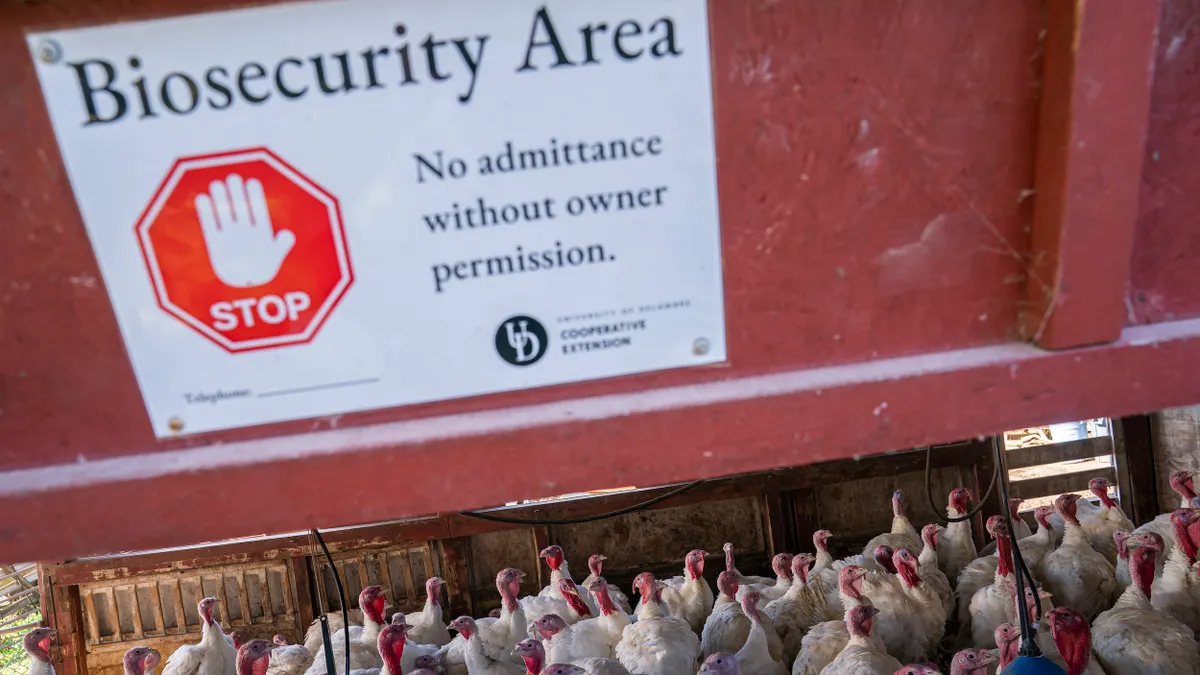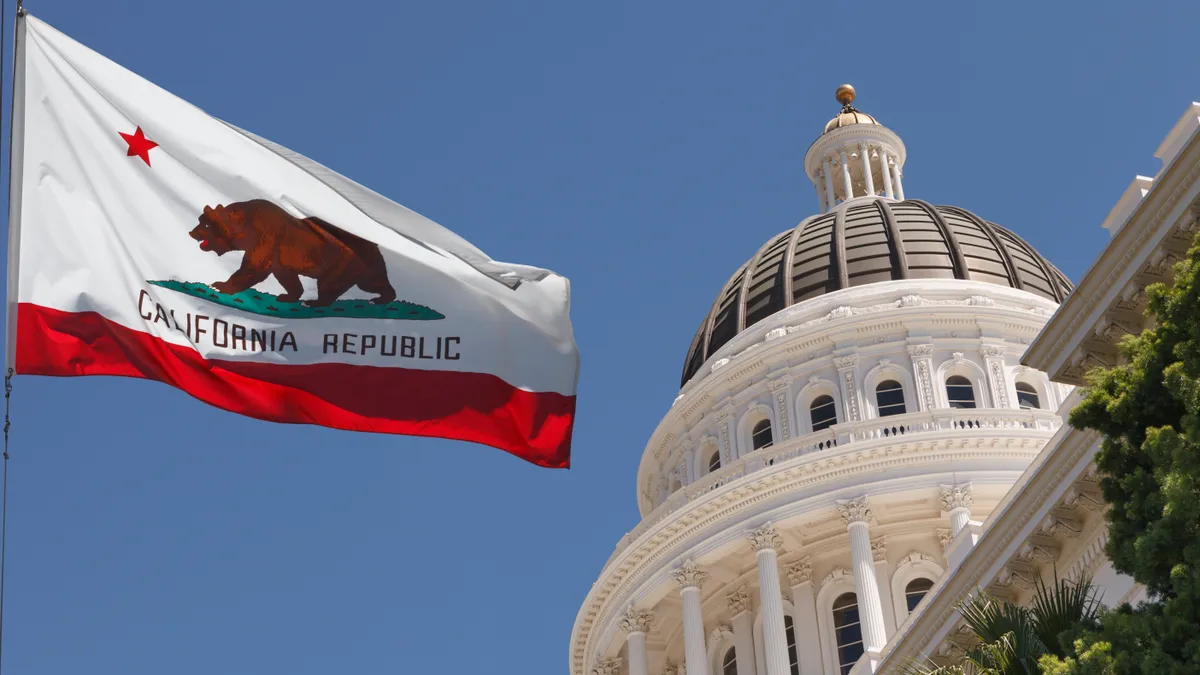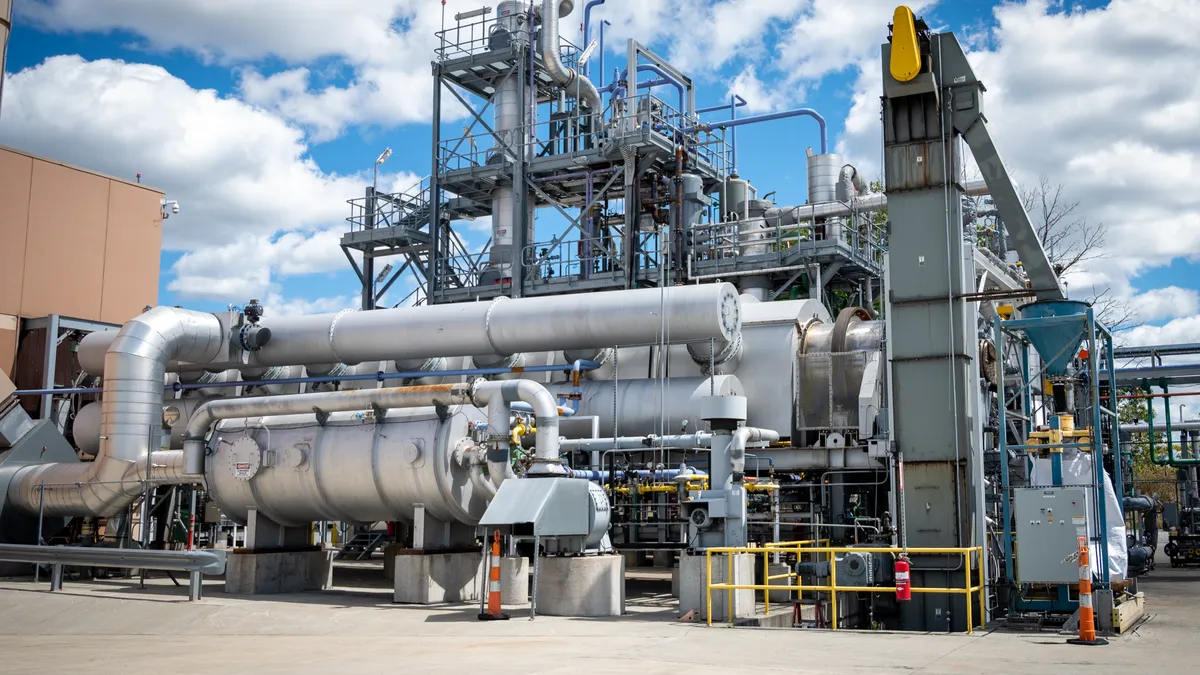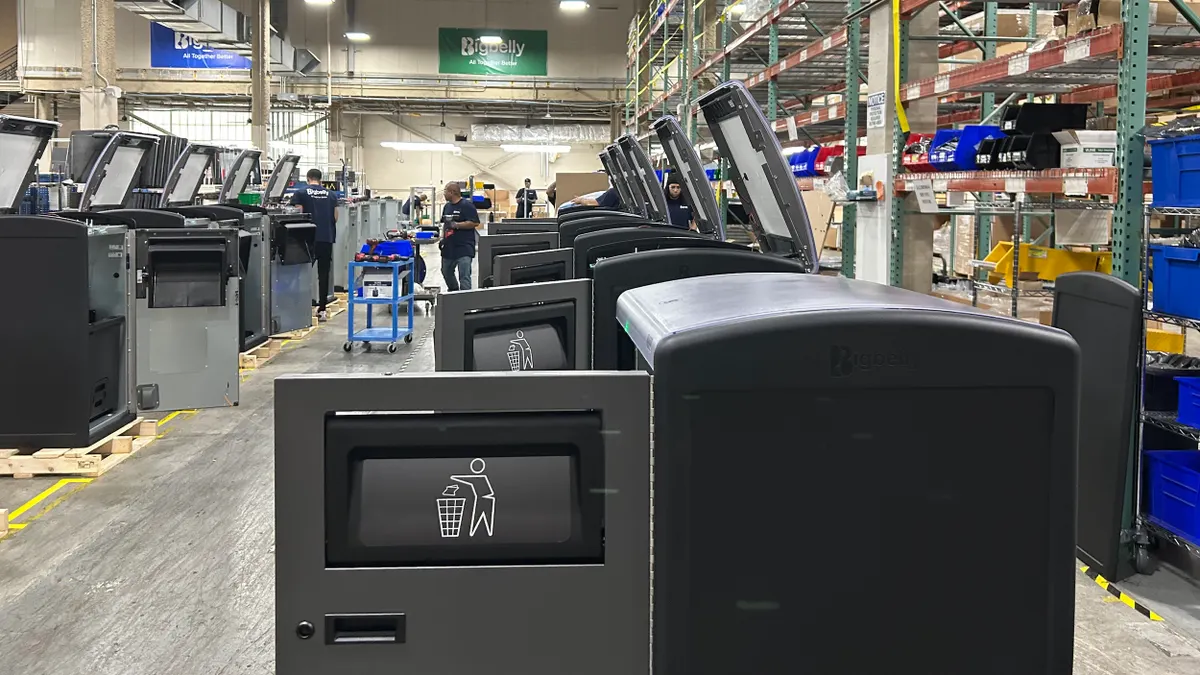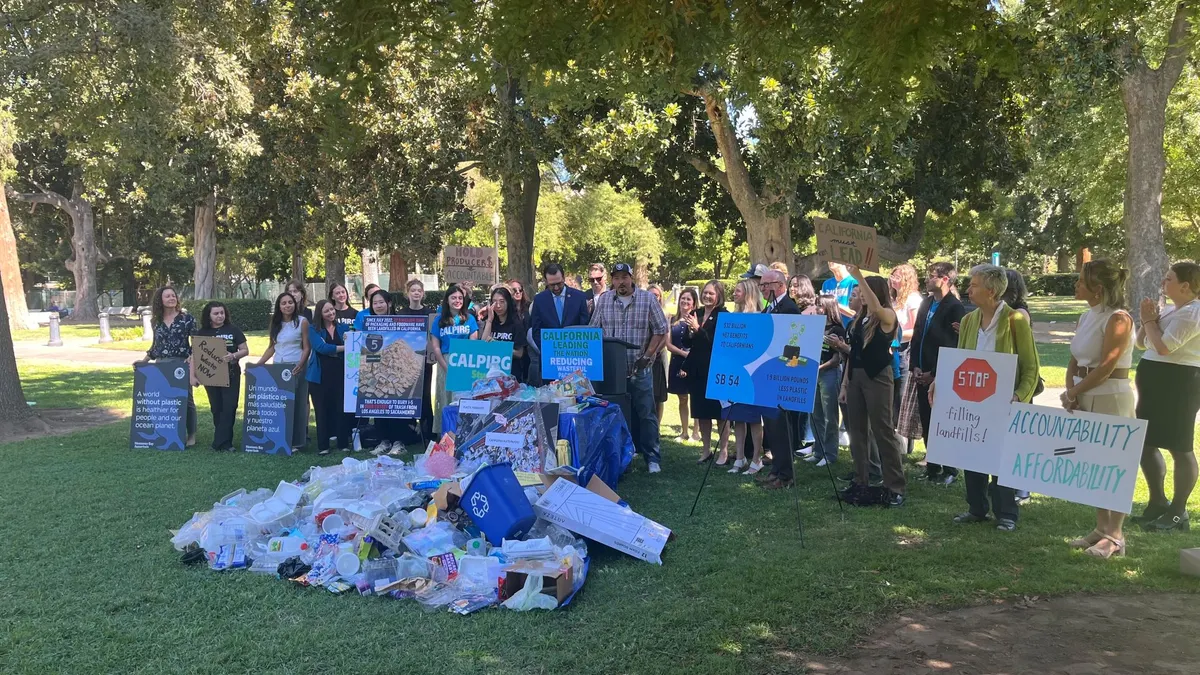Upcoming negotiations in Geneva meant to finalize a global agreement to end plastic pollution will have important implications for recycling supply chains, business innovations and brands’ voluntary plastic reduction commitments, said speakers during a Tuesday roundtable hosted by the Solid Waste Association of North America in Washington, D.C..
Speakers from WM, the Circular Action Alliance, SC Johnson and the U.S. Chamber of Commerce said they are closely monitoring the upcoming round of Intergovernmental Negotiating Committee meetings that will take place Aug. 5-14 in Switzerland.
“Some of these outcomes of INC-5.2 may impact plastic production, design and available end markets, which is really crucial,” said Amy Lestition Burke, SWANA’s CEO.
Though it’s unclear just what direction this round of negotiations may take, Burke said waste and packaging stakeholders are watching for major movement on topics such as proposed extended producer responsibility models or proposed limits on overall plastic production. Those two facets could meaningfully shape recycling supply chains and influence brands’ packaging design decisions, she said.
The Geneva negotiations are a continuation of a long-term discussion between global governments and stakeholders that started in 2022 and is meant to develop an international, legally binding agreement to end plastic pollution. The goal was to complete the process by the end of 2024, but negotiators did not reach an agreement at what was supposed to be the final meeting in Busan, South Korea, in November.
Though stakeholders from waste and packaging groups previously expressed frustration and disappointment that the negotiations have dragged into 2025, speakers at the SWANA event said a plastics treaty is nonetheless worth the time and effort.
“One thing we can all agree on is that the waste and resource resource management industry is key to this, and it is a solution,” Lestition Burke said.
Chuck Chaitovitz, vice president of environmental affairs and sustainability for the U.S. Chamber of Commerce, said the ideal plastics treaty outcome would offer a “global framework that drives country ambition” while helping to provide “effective collection and reuse systems and end markets where we would have a circular economy.”
The U.S. Chamber sent a letter in June to the U.S. State Department urging the federal government to continue participating in plastics treaty negotiations by advocating for an end to plastic pollution, but not an end to plastic use altogether. “An effective agreement would provide global economic opportunities,” the Chamber wrote.
A global plastics treaty must include investments in infrastructure that can boost recycling in both developed and developing countries, but those investments must also ensure long-term end markets for recycled materials, said Ganesh Nagarajan, senior director of plastics for WM.
“These investments need to happen now,” he said. “It's not just about having a framework or an agreement in place, but you need to really have those sustainable end markets behind it.”
Bolstering end markets could help raise recycling rates for hard-to-recycle materials such as plastic film and flexibles, he said. WM is currently working on some pilot programs to ramp up recycling for these materials, but is so far only recycling the materials customers are accidentally putting in their bins. “Only 2% is recycled today, so that's a large untapped opportunity for us,” he said. “We want to make sure there is a robust and predictable end market” before telling customers that such materials are allowed in curbside bins.
Many global brands are already working on voluntary recycled content goals that are driving the market for recycled materials, said Jeff Bezzo, plastics sustainability leader at SC Johnson. But voluntary actions alone won’t cut it, he said.
“We've made some great progress,” Bezzo said, noting that 25% of the company's packaging globally is made with recycled content. “We'd like to do more. It is hard to be competitive when you're doing voluntary actions versus everybody rowing together in the same direction. That means the brand owners, the waste haulers, the reclaimers, all the way through the entire circle.”
SC Johnson is also a founding member of the Circular Action Alliance, the producer responsibility organization that manages extended producer responsibility programs for six U.S. states.
“We see EPR as a key legislative tool to expand recycling, because most municipalities, let's face it, have stretched budgets,” he said. Better funding mechanisms means more collection, better MRF infrastructure and more developed end markets, he said.
Bezzo sees EPR as an important tool for global treaty discussions, too. “In a global treaty, we'd love to see EPR as part of that design guideline, so manufacturers around the world have some certainty around what packaging they should be putting into the market, so it has its best chance to get recycled,” he said.
For recycled content discussions, Bezzo said it’s important for brands to see PCR content requirements “ratchet up over time.” That would allow recycled plastics suppliers time to ensure they have viable end markets, he said.
The U.S. Chamber recognizes that “there is a role to play for EPR in a global agreement,” Chaitovitz said. However, “it’s really hard to consider these issues globally” when U.S. stakeholders alone are still grappling with key aspects of EPR programs, such as PRO funding mechanisms and decisions about who gets to be in the PRO. “Also, we need to decide who gets the materials back, both those in the recycling space who want to recycle it, but then those brand owners and others that want to reuse that material to continue to make valuable products.”
For WM, EPR could be an important driver as long as it has built-in demand drivers, such as minimum recycled content thresholds, Nagarajan said.
Previous INC meeting discussions included debates over whether to enforce virgin plastics production caps, and speakers at the SWANA event said they’ll be watching to see what direction those discussions take in Geneva.
Bezzo said brands should already be reducing virgin demand. Such virgin reductions can be advanced by PCR requirements and other drivers like product lightweighting and reuse and refill programs.
Consumers are already expressing an interest in products made with less plastic, Chaitovitz added, “but it's the market that needs to decide.”





